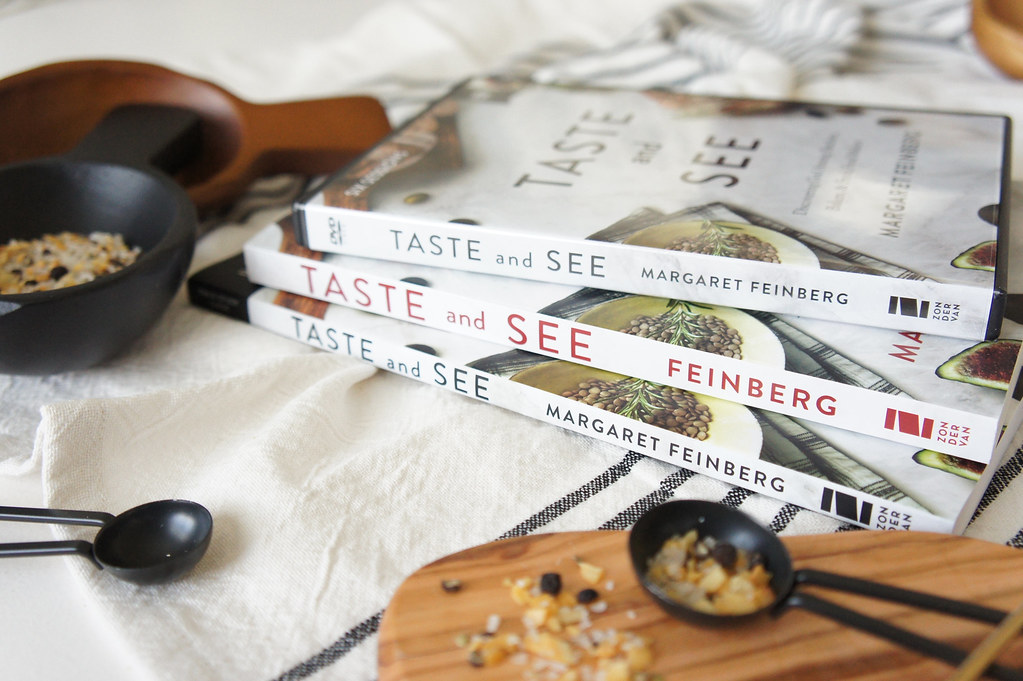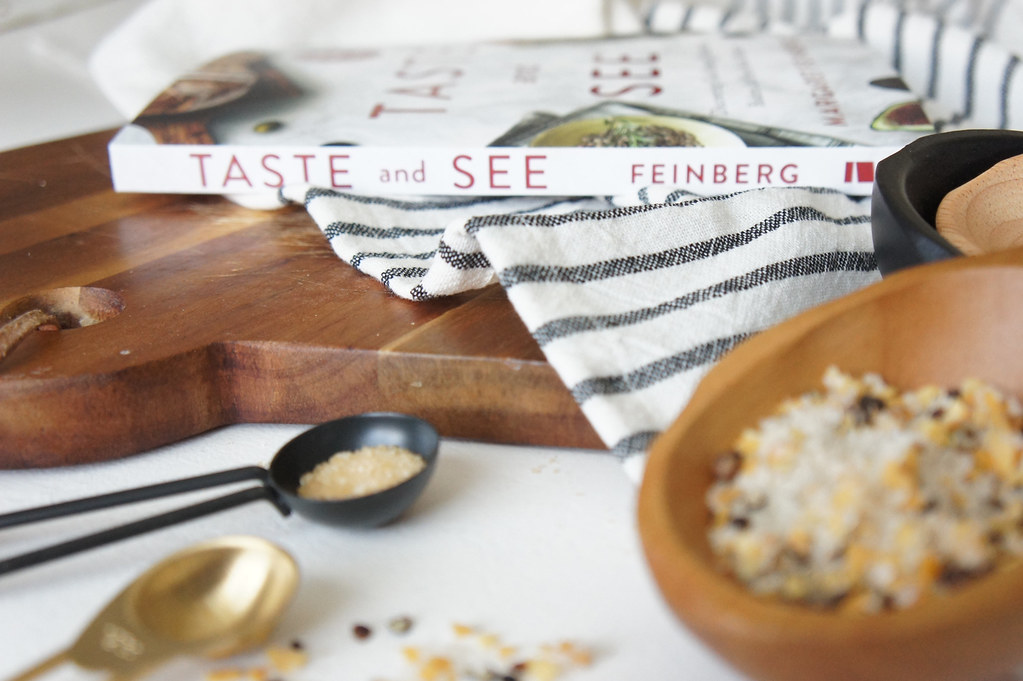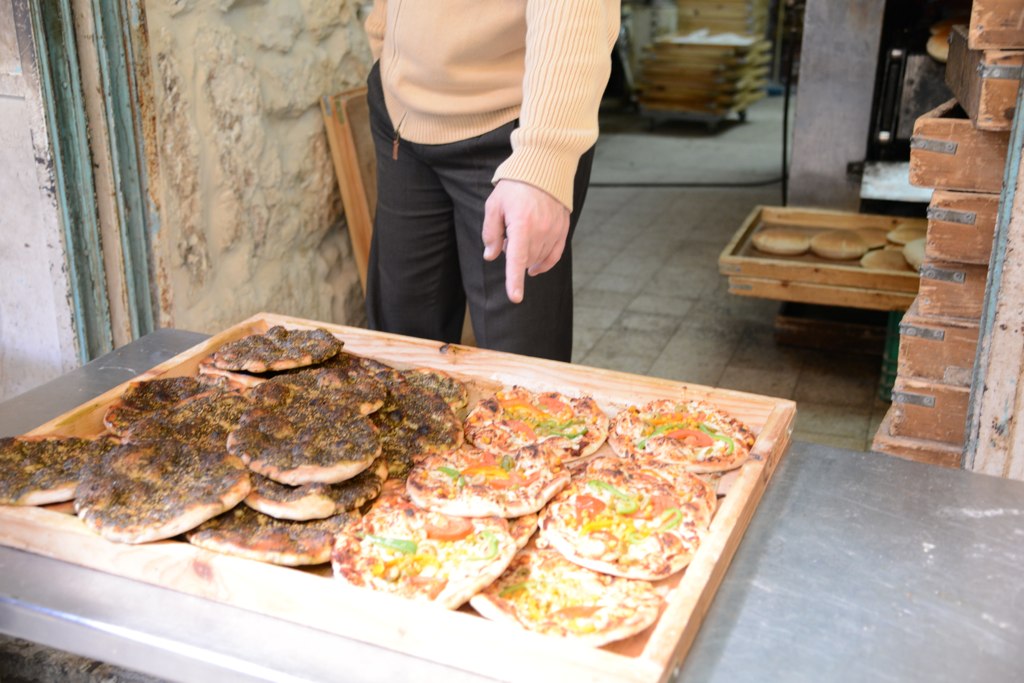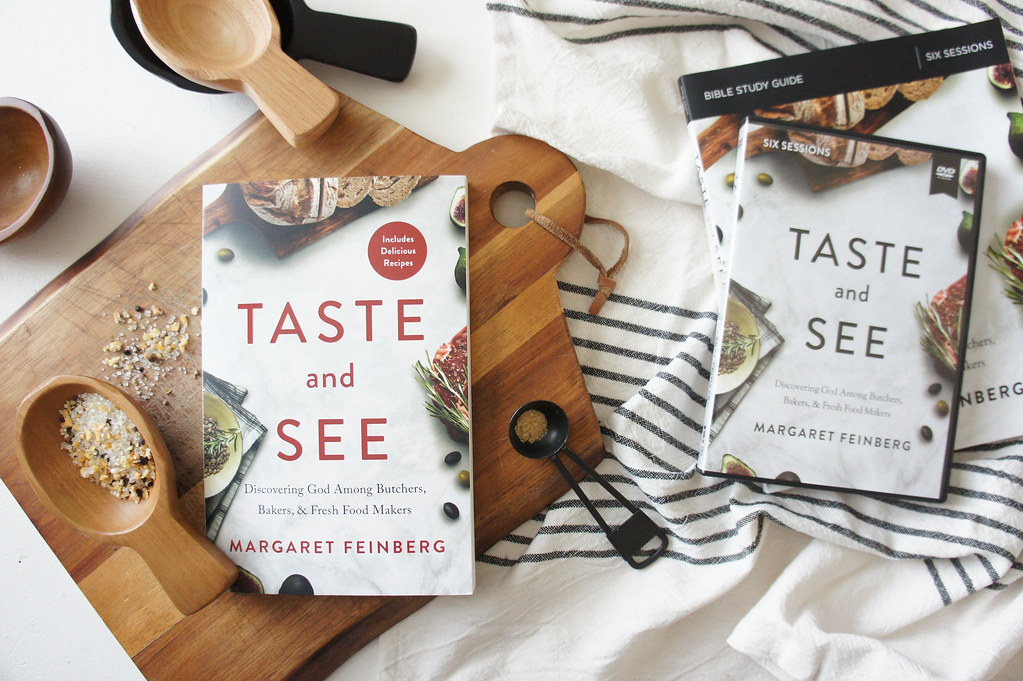Her laugh is unforgettable, and her wisdom is deeply thoughtful, and Margaret Feinberg’s gift of helping us see familiar Scriptures through a whole new lens—breathing life and hope and aha! moments are always insightful, genuine, and winsome. Years ago, I found Margaret through Scouting the Divine: My Search for God Among Wine, Wool, and Wild Honey. Well, she’s just embarked on a new culinary, spiritual adventure and I had the delight of sharing a pinch of the journey with her in Israel this past summer. It’s an unspeakable joy to welcome Margaret to gather and feast at the farm today….
guest post by Margaret Feinberg
I’ve always been hungry—ever since I was a little girl.
Maybe you, too, know what it’s like always feel hungry.
Hungry for food, hungry for seconds, hungry for an extra scoop of frozen dessert.
All too often I’ve found myself at a table and discovered it as a shameful place, rather than a sacred space.
Yet God never intended the table or the food we eat to be a source of shame. Rather a place that with each bite we would discover God as our sustainer, our provider, our way maker.
If we’re honest, each of us hunger for so many things that extend beyond physical appetite.
We hunger to know and to be known.
We hunger for others to accept, understand, and adore us.
We hunger to have someone to love and cherish with our affection.
Knowing we were created this way, I knew I needed to take a step back from what I thought and knew about the table and food and take a fresh look.
I soon discovered that food was created not just to satiate our bellies as we gather around the table, but to create a place where God could meet us and fill our hearts.
I started investigating the meaning and purpose of appetite in the Scripture.















As it turns out, food plays a major role in the pages of the Bible. Long before Rachael Ray learned to eat on forty dollars a day and Michael Pollan outlined the dilemma we omnivores face, God was the original foodie.
I soon embarked on a culinary, Biblical adventure.
I descended 410 feet down a salt mine,
traveled to Israel to fish on the Galilee,
spent time with a famous fig farmer,
brought in an olive harvest in Croatia,
and even graduated with a Steakology 101 certificate from a Texas butcher.
With each person, I asked how do you read these Scriptures—related to what you do to plant, procure, or process these foods—in light of what you do every day.
Their answers changed the way I read the Bible forever—and the way I approach the table.
Time and time again, I found myself asking, How have I grown up in the church, listened to so many sermons, downloaded so many podcasts, and no one has told me these things?
All this became a mouthwatering book and Bible study, Taste and See: Discovering God Among Butchers Bakers and Fresh Food Makers.
Along the way I rediscovered the table as a place of freedom, a portal of healing, connection, remembrance.
With each of the places I traveled, I shared countless meals, but there’s one I’ll never forget.
I flew half-way around the world to cast nets in the Galilee. I spent long days studying the life of life of fisherman and the fish.
I’d planned on staying for a few days, departing just before the Passover. But my host, Ido, insisted I stay and celebrate with his extended family.
Who wants to miss the opportunity of celebrating the Passover with a Jewish family in Israel?
So I spent the evening listening to the reading of the Haggadah, the children singing songs, and tasting bitter herbs and lettuce dipped in salt water—symbolic of the salty tears of the Israelites under the Egyptian rule.
After the meal, I tried to help clear the dishes but Ido’s grandmother, Vered, waved her index finger at me, “Sit Mar-gar-eet.”
Vered leaned over me and asked, “Do you know why we do this?”
The answer seemed obvious, but I felt unsure, “B-b-because it’s the Passover?”
“Because they must know where they came from,” she announced, gesturing toward the children. “This is our story from slavery to freedom.”
My eyes followed the pattern of plates and half-eaten dishes lining the table.
Together we had tasted the bitterness of oppression, remembered the hardship of slavery, tasted the salty tears of suffering, sunk our teeth into the bread of affliction, drank cups of redemption, and listened to a one of the greatest stories of liberation that had been handed down for thousands of years.
The Passover, which uses food as prompts, tracks the story of God’s liberation of Israelites. The meal commemorates a physical going free, but the heart of Passover is the invitation to become spiritually free, to lay behind that which hinders, ensnares, and enslaves us.
To discover that God wants to satisfy the deepest hungers of our hearts.
When Christ came, He signified another story which must be passed among generations.
This is an account of a special lamb, a man who offered up His body to free people from the slavery of sin. Just as God asks the Jewish people to commemorate the Passover with a meal, Jesus asks those who hunger for Him to commemorate His life with a meal; the same elements that are part of the Passover, the Pesach—the flatbread and wine—are also part of Eucharist.
Jesus could have chosen many activities as an act of remembrance like foot washing or a special prayer or listening to a rooster crow, yet Jesus chooses a meal.
Even more radical, Jesus is the meal, the Eucharist—The Bread of Life and True Vine.
I left Israel after that meal and flew back to the United States to engage in many other spiritual, culinary expeditions.
From fishing to farming and baking to barbecuing, I met God at table after table.
On the shores of Galilee, I learned to live wide-eyed for displays of God’s power through fish.
In a fertile valley in California, I discovered the connection between spiritual attentiveness and satisfaction thanks to figs.
In a seminary kitchen in Connecticut, I found holy community in unleavened bread.
Amid the darkness of a Utah mine, I uncovered transcendent purpose in glimmering salt crystals.
In a Croatian grove, I encountered divine healing in olive oil.
Around a Texas fire pit, I tasted the desire for God’s salvation in lamb.
Scouring the globe to taste and see God in fresh ways, I learned that, well, I didn’t need to scour the globe after all.
God is waiting around every table in every place, and you don’t need a passport or plane ticket to find Him.
You just need a table and chairs, some deliciousness, and a friend or two. Asking the question, “Where is God moving you from slavery to freedom right now?” Well, it can open up deeper conversations, deeper connections.
The opportunity to know and to be known, to accept and be accepted, to understand and be understood.
Whenever we gather to eat—whether in a tricked-out kitchen or seated in a borrowed chair with food atop our laps—God is there.
Yes, God waits in Galilee. But every table is a doorway, an entrance into sacred communion with God and those around us.
May we learn to taste and see God’s goodness together.
Bon Appetit and amen.
Margaret Feinberg is one of America’s most beloved Bible teachers whose books have sold more than one million copies. Her podcast, The Joycast, is described as the “Hap, hap, happiest half-hour of your week”.
My friend, Lisa Harper describes Taste and See as, “The most delicious book you’ll read this year!” And founder of If: Gathering, Jennie Allen, describes Taste and See as, “An unforgettable culinary journey through the Bible.”
To read Margaret’s adventures and discoveries is pure joy—it’s like Eat, Pray, Love for Jesus lovers. You’ll find Taste and See: Discovering God Among Butchers, Bakers, and Fresh Food Makers is a one phenomenal, funny, scrumptious book and Bible study, that you won’t be able to put down once you start reading.
This is an absolute must-read book and Bible study! And here’s a delicious introduction for you:
[ Our humble thanks to Zondervan for their partnership in today’s devotion ]








